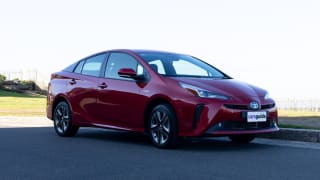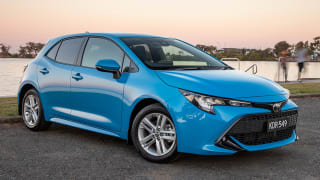The Mazda3 sedan is a stunner in more ways than one, especially in X20 Astina form.
Up front, the ‘3’ sedan is clearly a Mazda, with the brand’s familiar family face proudly on display, as evidenced by the large grille linked to the X20 Astina’s adaptive LED headlights and daytime running lights by thick chrome trim.
This sleek front fascia leads into the Mazda3 sedan’s almost-as-delightful sides, which are a lesson in simplicity. The roofline, especially, looks sporty but doesn’t buy into the fastback fad. The X20 Astina’s 18-inch alloy wheels with 215/45 tyres also look great.
At the rear, the Mazda3 sedan is arguably at its best, once again looking simple but purposeful. The LED tail-lights are alluring, as are the dual exhaust tailpipes. It’s no longer a foregone conclusion which body-style is the most attractive. Be worried, hatchback.

That said, it’s inside where the Mazda3 sedan blows the competition away. You could easily mistake it for a Mercedes-Benz C-Class or a BMW 3 Series. Hell, it could even be confused with an E-Class or 5 Series, it’s that premium... no, luxurious.
Supple leather-accented upholstery covers the seats, steering wheel, door inserts, central armrest and middle dashboard in the X20 Astina, while soft-touch plastics are used for its door shoulders and upper dashboard. But all of that’s not even half the story…
For example, all of the switchgear feels superb, and the steering wheel’s stalks are beautifully damped. Then there are the generously padded armrests across both rows.
Yes, we could go on and on about how luxurious – that’s beyond premium – the interior is.
Better yet, the driving position is spot on, and a 7.0-inch multifunction display between the tachometer and speedometer is a welcome inclusion , although its functionality is rather limited when to compared to most digital instrument clusters.

To the left, though, is a ‘floating’ 8.8-inch display, powered by Mazda’s latest multimedia system, complete with a sharp set of graphics but no touch input method.
Yep, Mazda has doubled down on the rotary controller (with shortcut buttons) that it previously exclusively championed. While somewhat controversial, it’s the right move from a safety perspective, so too is the persistence with a row of physical climate controls.
Not as clear-cut, though, is the widescreen format of the central panel it operates, with it looking particularly skinny when using the X20 Astina’s in-built satellite navigation or smartphone mirroring (wired Apple CarPlay and Android Auto).
Similarly, the X20 Astina’s windshield-projected head-up display is almost too small to be legible, which is frustrating because it's otherwise well positioned.


















